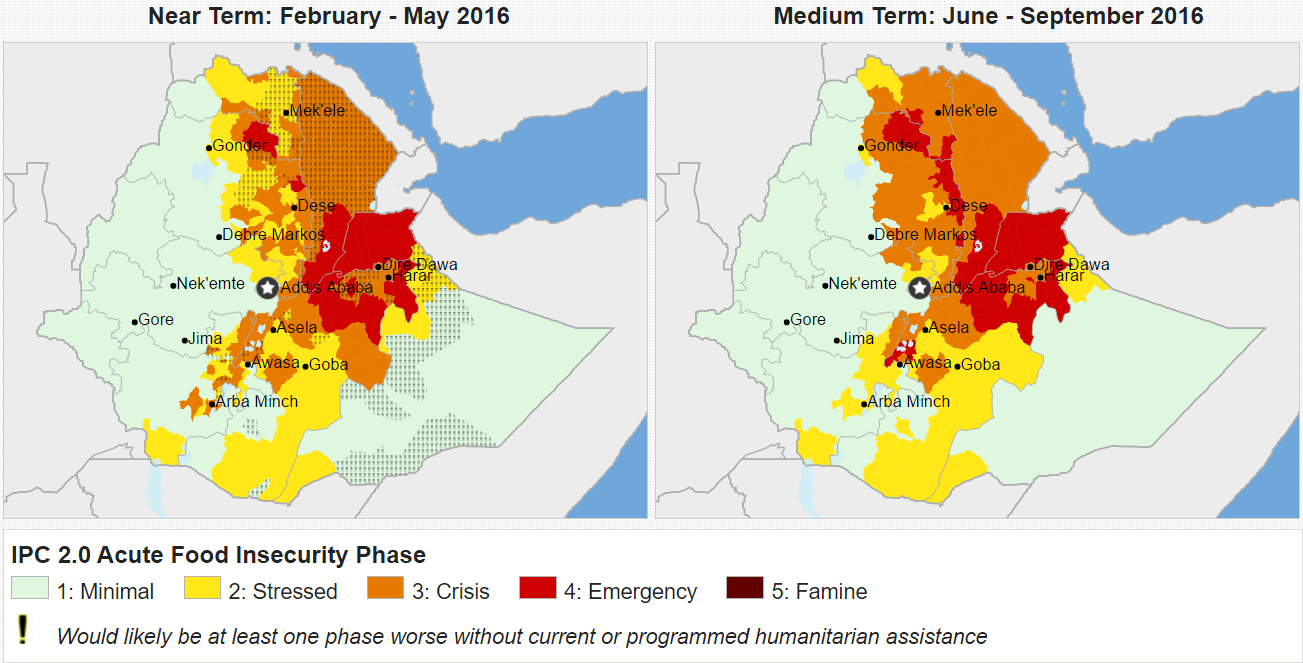

Since the revision of the Humanitarian Requirements Document (HRD) in August 2017, the humanitarian context in Ethiopia has continued to evolve which has led the Government and humanitarian partners to further adjust the HRD requirements. Partners also estimate that 376,000 children will become severely acutely malnourished until the end of 2017. In the second half of 2017, some 8.5 million people will require emergency food assistance, some 3.6 million children and pregnant and lactating mothers will require supplementary feeding, some 10.5 million people will not have regular access to safe drinking water and some 2.25 million households will require livestock support. The humanitarian situation countrywide has been further compounded by below average spring rains – the third consecutive poor/failed rains in the southern drought belt.

Southern and eastern Ethiopia continue to battle the impact of the Indian Ocean Dipole-induced drought, exacerbated by disease outbreaks, large scale loss of livelihood assets and displacement. During the dry season, the response will be complemented by supplementary food based on regular screenings to ensure the most vulnerable are reached. Drought conditions are expected to peak during the dry December to March jilaal season, which is likely to lead to a sharper deterioration in livestock body conditions, and impacting milk production and nutrition status of the families that depend on livestock for their food and income. In addition, 2.7 million children and pregnant and lactating mothers require supplementary feeding, 9.2 million people need support to access safe drinking water, 1.9 million households need livestock support, and 300,000 children between 6-59 months old are targeted for the treatment for severe acute malnutrition in 2017. As a result, some 5.6 million people in Ethiopia require emergency food assistance in 2017.

While Ethiopia battles residual needs from the 2015/2016 El Niño-induced drought, below average 2016 autumn rains in the southern and southeastern parts of the country have led to a new drought in lowland pastoralist areas, as well as in pocket areas across the country.


 0 kommentar(er)
0 kommentar(er)
